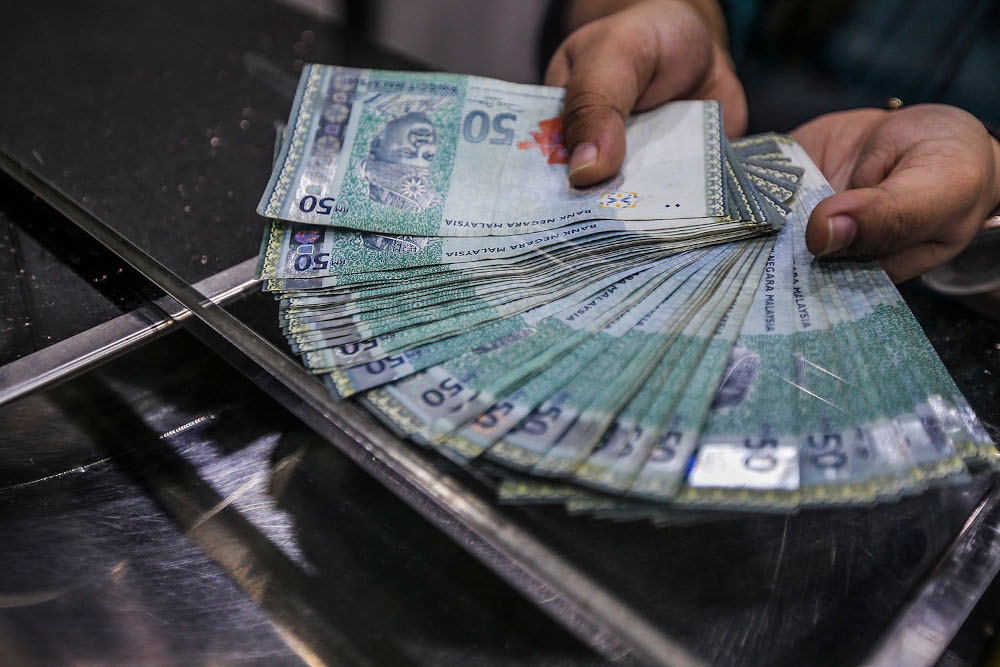KUALA LUMPUR, Dec 18 — Malaysia is on course to register a strong economic turnaround in 2021, driven by massive fiscal and monetary measures, a low base effect and a rebound in global growth, says Public Investment Bank Bhd.
It said the ringgit and capital markets would also recover, consistent with renewed investor sentiment towards the emerging markets.
“All these are possible, thanks to receding headwinds from Covid-19 which is expected to be contained favourably in 2021,” it said in a note today.
The investment bank said investor sentiment is likely to get a boost by the prospect of more than one vaccine approved for Covid-19 — further increasing the global coverage against the pandemic, and therefore stimulating global growth momentum.
The private sector will remain as the main growth driver, with private consumption set to grow above the historical average, driven by massive pro-consumption initiatives rolled out in 2020 and 2021.
Gross domestic product (GDP) is expected to grow by 6.2 per cent in 2021, compared with an estimated contraction of 4.7 per cent this year.
It said that Malaysia is also entering a significant junction in 2021, especially with the impending release of 12th Malaysia Plan in the first quarter 2021, and the possibility of a general election being called towards the later part of the year.
“We expect a return to normalcy in air travel — a boon to the tourism sector, albeit gradual. This will, in turn, buoy activities in the services sector.
“This is expected to be led by the Asean region on the back of brighter economic prospects and competitive currencies, which could trigger capital inflows into the region.”
However, it said internally, risks to growth may come from several sources, such as renewed and large-scale Covid-19 infections, prolonged and acute political uncertainty, as well as a sharp rise in capital outflows, to name a few.
External risks may come from unexpected normalisation in advanced economies’ policy rates, a change in the United States’ (US) foreign and business policies, a less-than-favorable second US-China trade deal and a spark of geopolitical risks that may increase the risk premium on oil.
Ringgit outlook: Volatility to subside
The investment bank opined that ringgit advancement will be driven by a combination of external and internal factors, including a turnaround in oil prices, policy normalisation in Malaysia and around the region, renewed investor sentiment towards the emerging markets and a favourable second US-China trade deal.
The prospect of a strong economic turnaround post-Covid-19 and the possibility of a general election being called in 2021 will also boost the local currency.
This set of drivers may push the ringgit to average between RM4.00 and RM4.05 per US dollar in 2021 (year-to-date 2020: RM4.21 per dollar), it said, adding that ringgit volatility will be soothed by advanced economies’ policy status quo which may remain until 2022.
The bank also said that inflation is expected to rebound to +1.6 per cent in 2021 from an estimated -0.6 per cent in 2020 due to the turnaround in oil prices and recovery in demand.
It said a rise in inflation is also positive for the economy as it can boost capital investments which have suffered a marked downturn in the last one year.
“Higher inflation will also make real interest rates more competitive, which in turn could entice more borrowing activity.
“Competitive real interest rate of about +0.50 per cent in 2021 against 3.9 per cent in 2019 could maintain investors’ risk appetites in risk assets,” it said.
As for the industrial production index, it said the index would likely rebound in 2021, driven by a recovery in the manufacturing and electricity sectors consistent with strong growth prospects for the year.
Meanwhile, the FBM KLCI is expected to close 2021 at 1,750 points.
Better prospects for commodities
Commodity prices will rebound in 2021, driven by greater successes in the containment of COVID-19 globally, the investment bank said, adding that this shift in prospects will spur demand for commodity products on the back of higher disposable income and better employment market.
“We expect a turnaround in major commodity prices, with the exception of oil amid its persistent supply and demand imbalance.
“The normalisation in global supply chain and unrestricted mobility will be the additional factors that will buoy demand for global commodity products, while the extended period of low US interest rate environment which may run well in 2022 is another catalyst that could drive demand for global commodity products,” it said.
The investment bank added that a full recovery in oil prices may take a while, as supply and demand imbalances may some time to correct.
It noted that the Organisation of Petroleum Exporting Countries and its allies (Opec+) is likely to take a gradual approach in normalising its production post-Covid-19 in order to avoid unnecessary pressure on oil prices.
“We see crude oil prices (Brent) averaging between US$45 and US$50 per barrel in 2021 (year-to-date 2020: US$42), possibly stronger, should the global economy recover sharper than expected,” it said. — Bernama






















